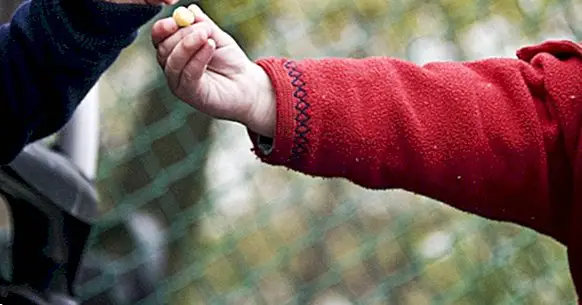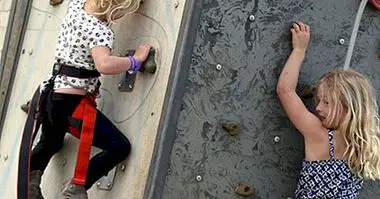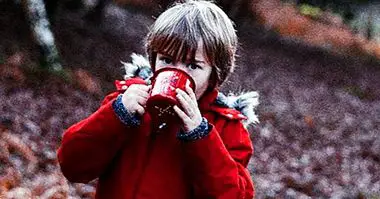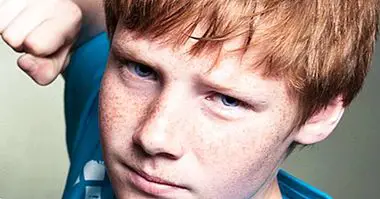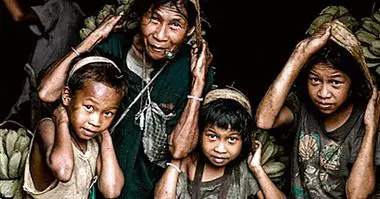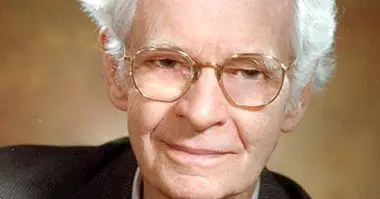Altruism: development of the prosocial ego in children
Even before receiving moral education , the children already demonstrate a behavior similar to prosocial .
Altruism: the development of the prosocial self
Origins of altruism
At 12-18 months they sometimes offer toys to their peers. Approximately 2 years show more rationality when offering their belongings when they are scarce. At 3 years, show reciprocity by returning the favor.
Regarding the origins, there are individual differences, some children show altruistic behavior and others do not. This may be due to:
- Children showing self-recognition.
- Parents who, instead of reacting in a coercive way, act in a more affectionate way (eg, you made Dorg cry, biting is not good).
Development trends in altruism
Self-sacrificing acts are infrequent in children who start walking or in preschool children. It is from primary school when they begin to show pro-social attitudes.
There are no gender differences in prosocial behavior.
Cognitive social and affective contributions of altruism
There is a causal link between an affective and social perspective. There are two prerequisites: empathy and social moral reasoning (thought shown by people who decide to help other people, share with them or comfort them despite the fact that these actions could be costly for themselves).
Prosocial moral reasoning
Much research has focused on a child's reasoning in prosocial issues and its relation to altruistic behavior.
At first the worry falls on one's own needs, but as they mature, they tend to be more sensitive to others.
For Eisenberg , the growing capacity for empathy influences prosocial reasoning.
Levels of prosocial moral reasoning of Eisenberg | ||
| level | Aproximated age | Brief description and typical response |
| Hedonist | Preschool, start of elementary school. | The concern lies with one's needs. He is more likely to give help if it benefits him. |
| Oriented towards the needs | Elementary school and some preschoolers | The needs of others are recognized as a legitimate basis to help, but there is little evidence of sympathy or guilt for not helping. |
| Stereotyped, oriented towards approval | Elementary school and some high school students | The concern for approval and the stereotyped images of good and evil greatly influence. |
| Empathetic orientation | Older children of elementary school and high school students. | Judgments include evidence of compassionate feelings; vague references to duties and values are often made. |
| Orientation towards internalized values | A small minority of high school students; no elementary school student. | The justifications to help are based on internalized values, norms, convictions and responsibilities; The violation of these principles can undermine self-respect. |
Empathy: an affectionate and important contribution to altruism
According Hoffman , empathy is a universal human response that has a neurological basis that can be stimulated or suppressed by environmental influence. Some children may show sympathetic empathic activation (feelings of compassion when the other is distressed) or self-directed anguish (feelings of anguish when the other is distressed).
→ Socialization of empathy
Parents can stimulate compassionate empathy acivation:
- Modeling empathic concern
- Using forms of discipline with affective orientation
→ Age trends in the relationship between empathy and altruism
The link between empathy and altruism is stronger in preadolescence, adolescence and adulthood, and less in preschool and primary school. Younger children lack the skills to consider the point of view of others.
→ Assumption of the responsibility felt
Theory that maintains that empathy can stimulate altruism as it encourages reflection on altruistic norms, which generates the obligation to help others who are distressed.
Cultural and social influences of altruism
→ Cultural influences
The most altruistic societies are those less industrialized and less individualistic. Although societies differ in the importance they attach to altruism, they all apply the social responsibility norm (everyone must help those in need of help). Adults persuade children differently to care about the welfare of others.
→ Altruistic reinforcement
Children reinforced by altruistic behaviors are less likely to exercise prosocial behavior once the awards cease.The verbal reinforcement of an affectionate person to which children respect, does stimulate altruism in this case.
→ Practice and preaching of altruism
Social learning theorists assume that adults who stimulate altruism and practice what they predict influence children in two ways:
- When practicing they serve as models for children.
- The regular practice of altruistic exhortations (verbal stimuli to help, comfort, share or cooperate with others) make the child internalize them, but only if there is an affective bond with the model that provides a lasting change.
Who raises altruistic children?
Altruistic people are those who have enjoyed a warm and affectionate relationship with their parents. The total activists have had parents who practiced what they preached, while the partial activists have had parents who only preached.
The discipline based on affection and rationalization has a positive effect and brings better results.
Bibliographic references:
- Gordillo, MV. (nineteen ninety six). "Development of altruism in childhood and adolescence: an alternative to the Kohlberg model". Front Cover.
- Shaffer, D. (2000). "Psychology of development, childhood and adolescence", 5th ed., Ed. Thomson, México, pp

